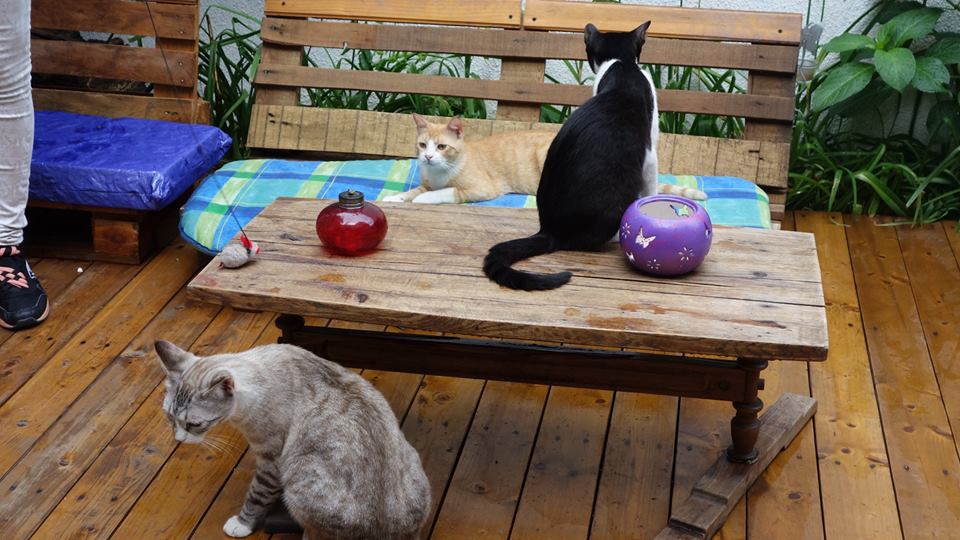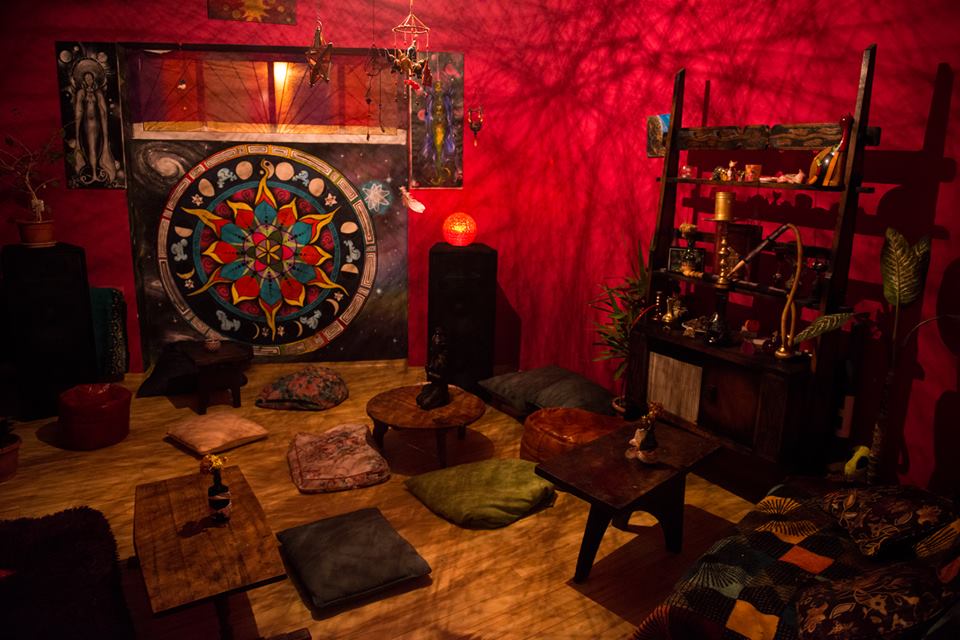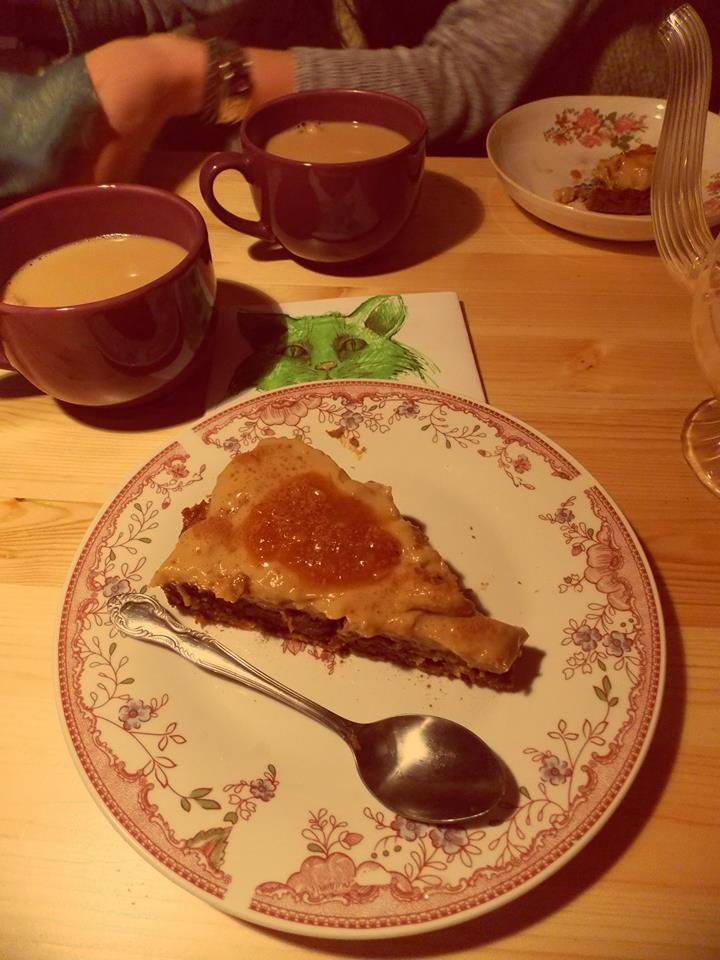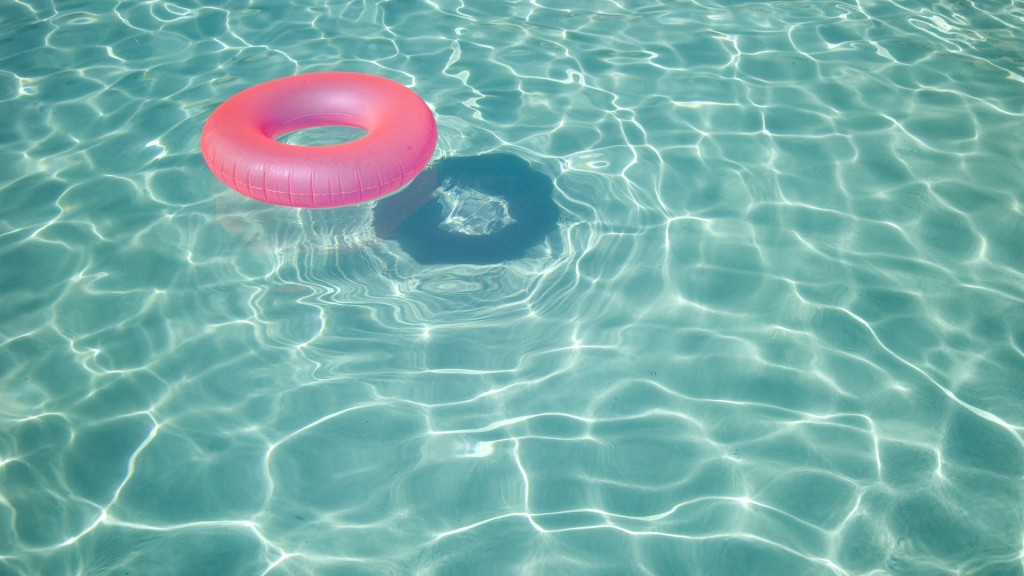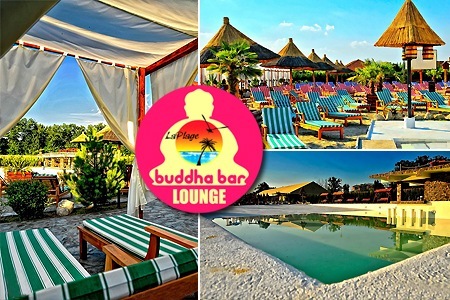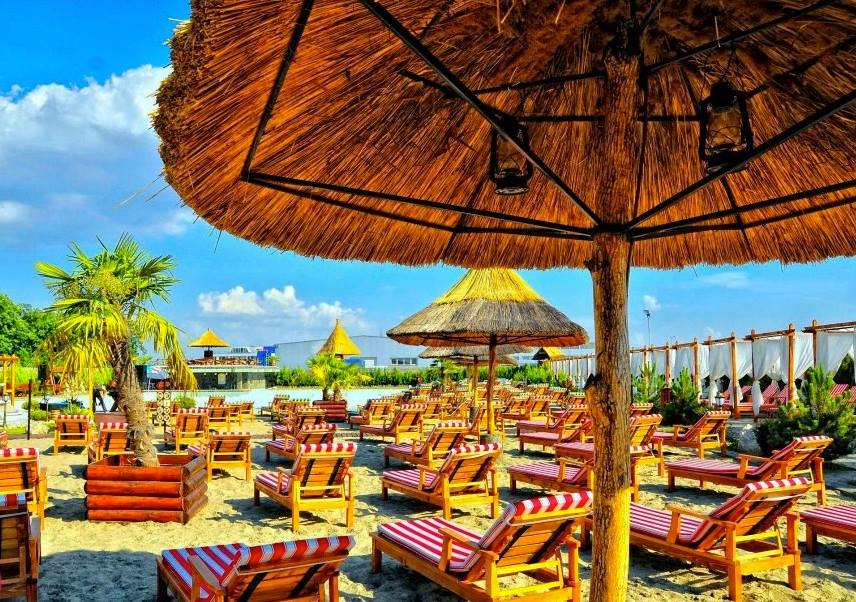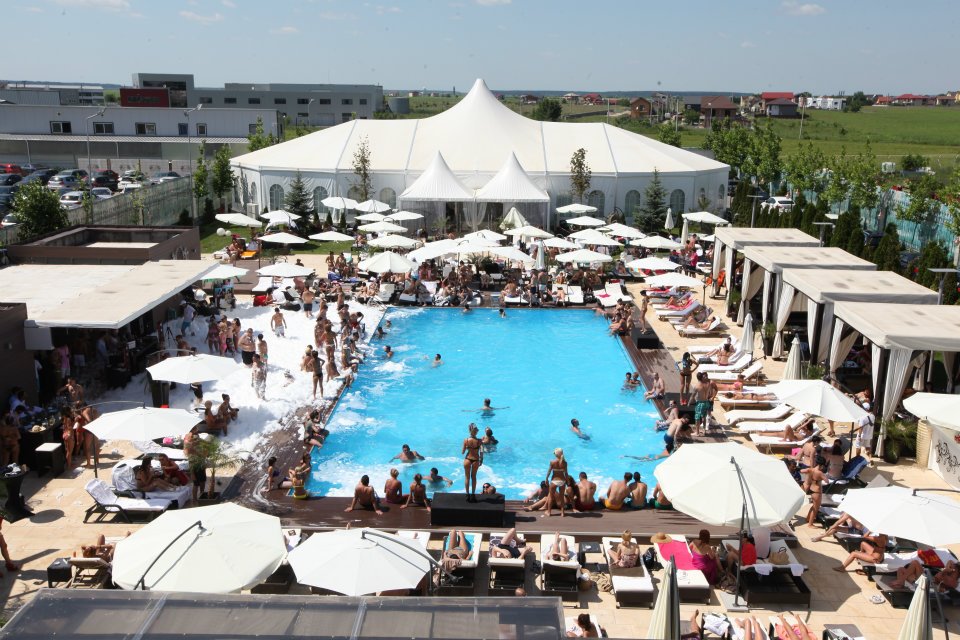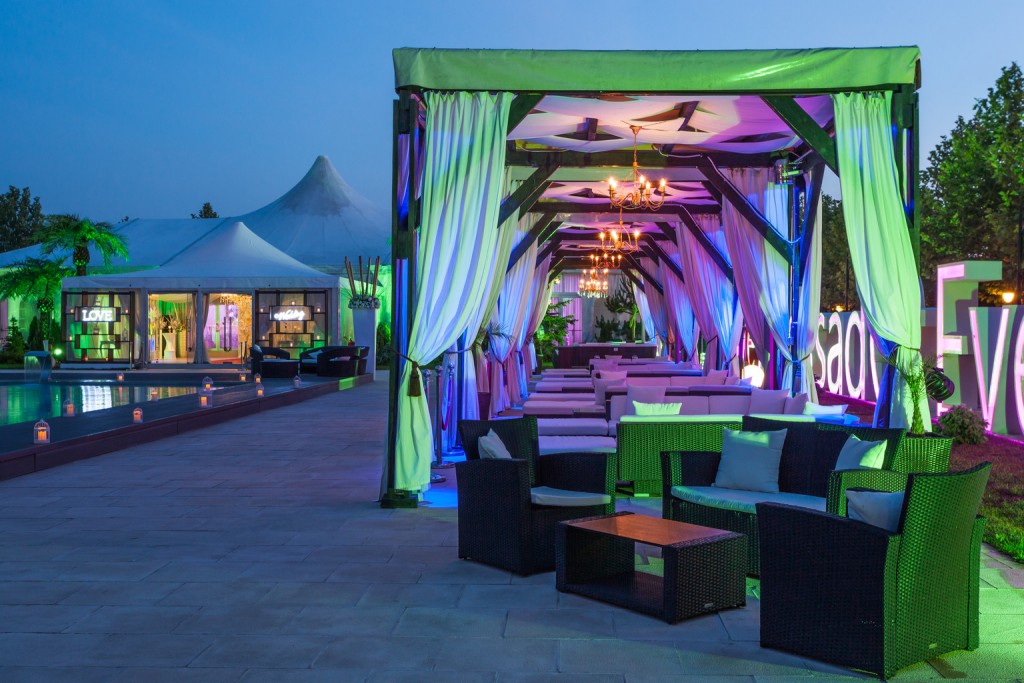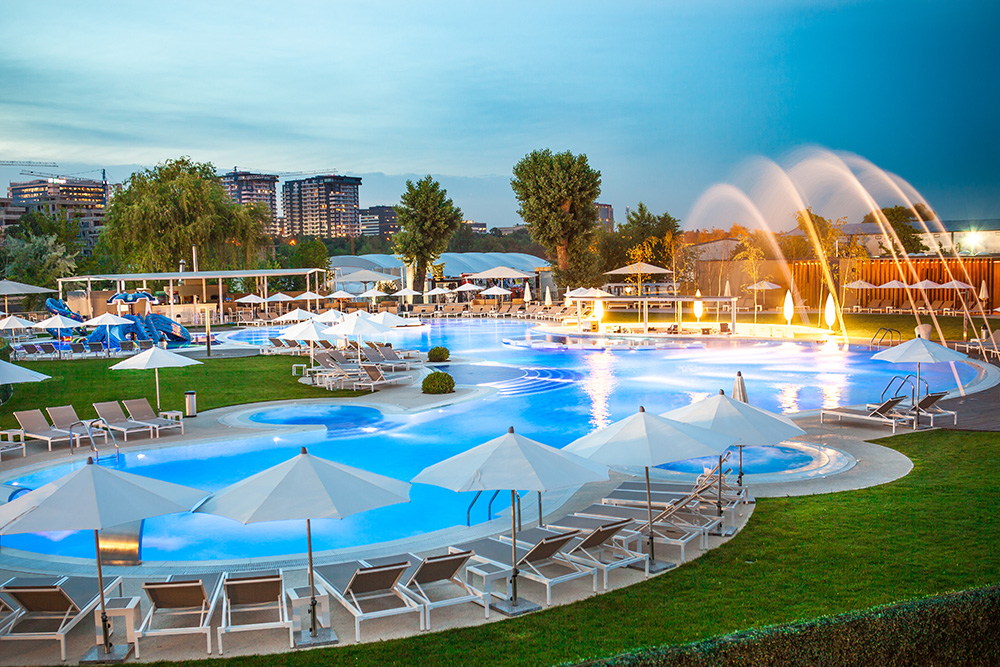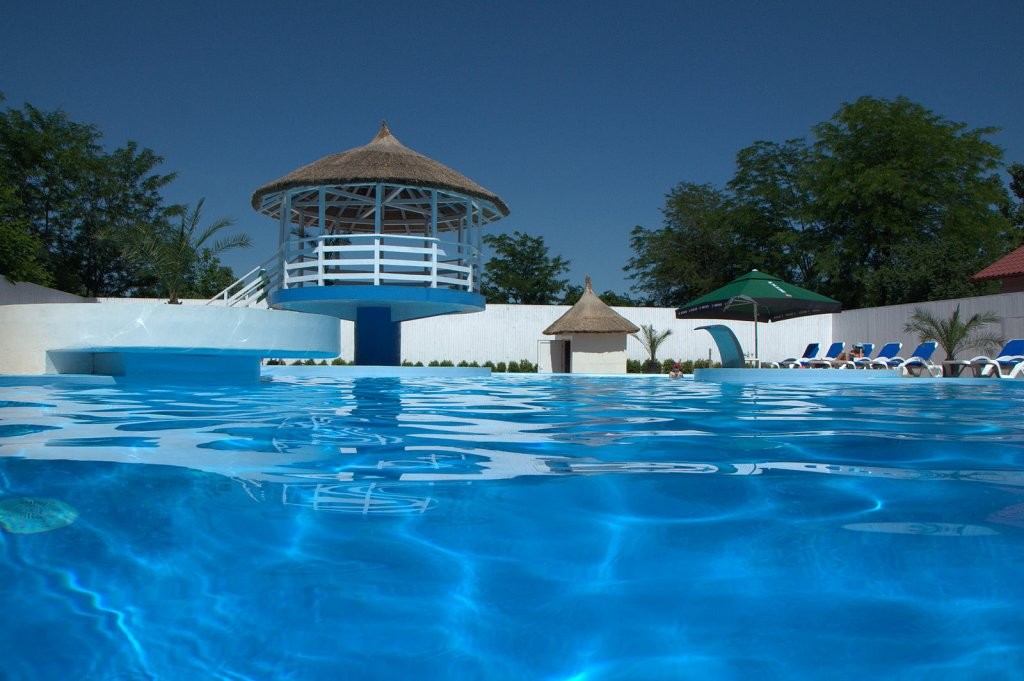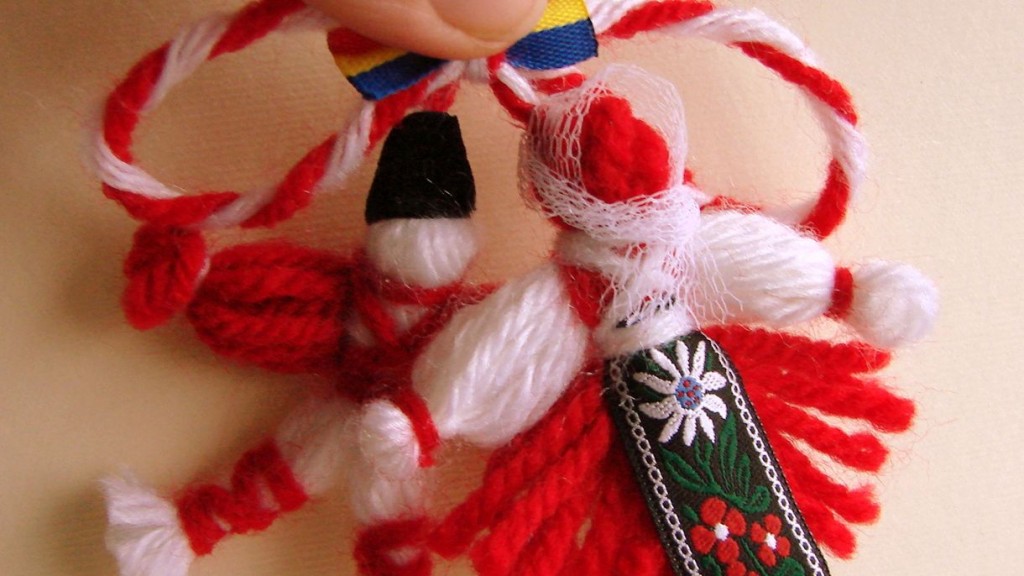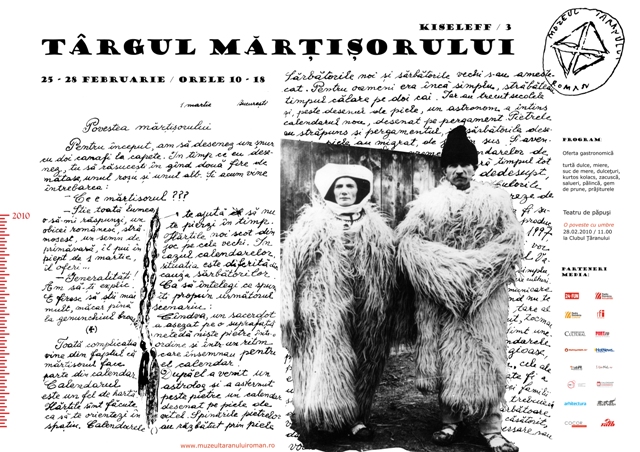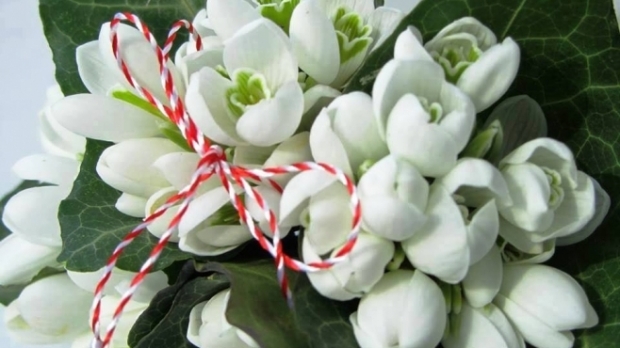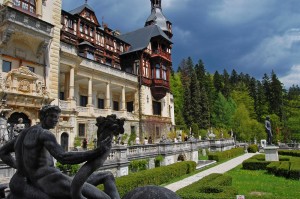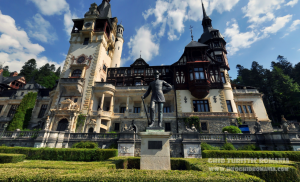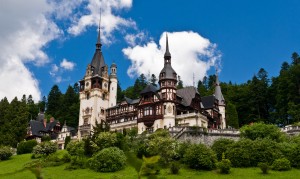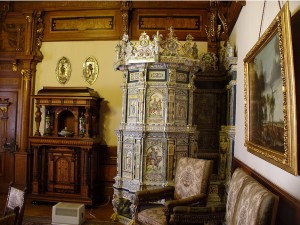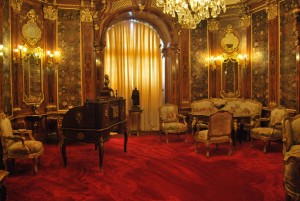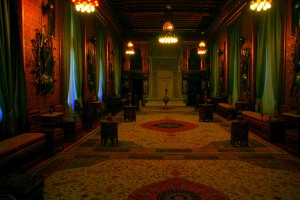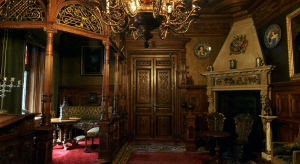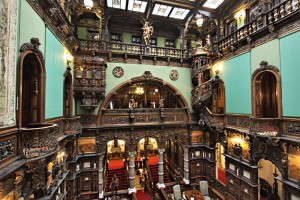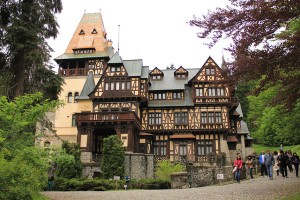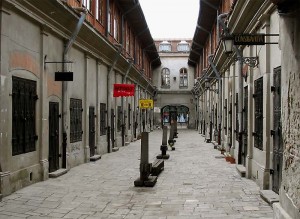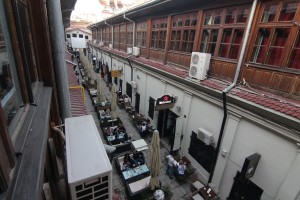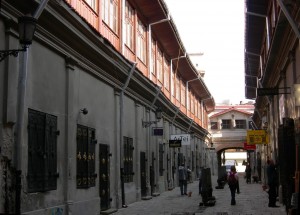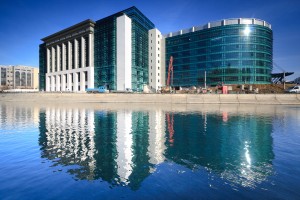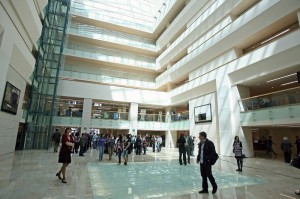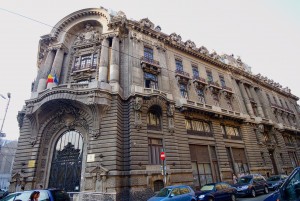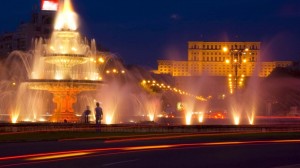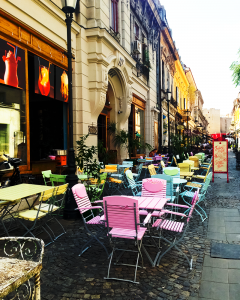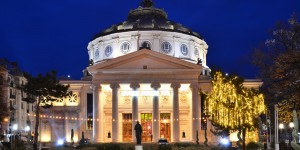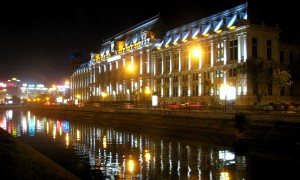Atat in Bucuresti, cat si in orasele turistice din tara, din ce in ce mai multi proprietari aleg sa-si inchirieze apartementele in regim hotelier. In capitala, tarifele pentru inchirierea unui apartament cu o camera pe termen scurt (1-3 nopti) variaza undeva intre 20 si 40 euro, in functie de spatiu, conditiile oferite si proximitatea fata de centru. In general, sunt preferate apartamentele luxoase, proaspat renovate si imbunatatite, care pot rivaliza usor cu o camera de hotel. Read more »
Tag Archives: apartamente in regim hotelier
Apartamentele in regim hotelier, o concurenta reala pentru hoteluri
Imobiliarele in Romania. Casele mai scumpe sunt in top.
Se pare ca piata imobiliara din Romania trece prin schimbari majore anul acesta, ceea ce se traduce prin majorari de preturi considerabile, atat la apartamentele noi, cat si la proprietatile din cladirile vechi. Read more »
Tendintele pe piata imobiliara din Bucuresti
Se pare ca pentru piata imobiliara din Bucuresti, cresterile de preturi incepute inca din 2017 continua sa ia amploare si in 2018. Anul trecut am observat cu totii ca preturile au început sa creasca la toate tipurile de proprietati, iar specialistii ne anunta sa ne asteptam la noi scumpiri si in perioada urmatoare. Read more »
Cafeneaua cu pisici
Ei, cam cat de tare este asta?!
Mi se pare genial! Am citit despre aceasta cafenea cu pisici si mi s-a parut fantastic! Ce poate fi mai cool, pentru un iubitor de pisici, bineinteles, sa-si bea cafeaua la torsul unei pisicute? 😀
La aceasta cafenea sunt pisicute maidaneze si se pot adopta sau dona banuti pentru sterilizarea lor, printre ele fiind si pisicutele proprietarelor.
Cafeneaua cu pisici se află pe strada Maximilian Popper, nr. 41, Bucuresti.
Pe lângă plăcerea de a se sta în compania pisicilor,va puteti bucura si de diversele sortimente de cafele, smoothi uri, fresh-uri și mâncare vegetariană.
Sunt iubitoare de animalute, in special de pisici, sunt colocatara cu o pisicuta persana tricolora si o ador..asa ca acest post vine exact pe inima mea.
Mi se pare o super idee sa delectezi clientii cu o cafea buna sau un fresh si in acelasi timp sa oferi posibilitatea unor iubitori de animalute sa adopte un sufletel, astfel impusti 2 iepuri, vorba aceea…si umanul are prieten si animalutu’ e salvat de pe strazi si are si el o casuta si muuulta iubire.
Salut initiativa celor doua surori de la Cafe Miau! 😉
Stay connected! ;D
www.eastcomfort.com
Surse: restograf.ro
Vine, vine primavara!!
1Martie, Ziua Mărţişorului este sărbătorită atat de români şi de alte popoare din Balcani, semnificand biruinţa primăverii asupra iernii, fiind un fel de amuleta care să poarte noroc.
Martisorul era vaziut ca un talisman protector. Se credea ca te apara de fortele malefice, prevenea imbolnavirea in lunile care urmeaza lui martie, tinea deoparte deochiul.
Una din traditii era sa prinzi snurul la incheietura mainii si ai grija sa il inchei intr-un nod. Acesta avand functie protectoare si, in perioada in care purtai acest snur, avea puterea de a tine raul si ghinionul la distanta.
In perioada de inceput a lunii Martie, 1-9 martie,se aleg Babele pentru a vedea cum iti vor fi zilele in anul respectiv sau cum iti este sufletul, dupa alte datini.
De zielel Babelor, Baba Dochia obisnuieste sa toarca si sa isi scuture cele noua cojoace, unul cate unul, in fiecare din cele noua zile. In zonele din Ardeal, femeile nu trebuie sa lucreze cu fusul cat timp dureaza “Babele” pentru a nu atrage asupra lor mania si blestemele Babei Dochia.
In unele zone din Bucovina sau Moldova, se mai pastreaza si in ziua de azi ,un obicei frumos:
fetele trebuie sa poarte la gat, agatate de un snur in rosu si alb, monede de aur sau de argint, care trebuia purtata timp de 12 zile dupa care era folosita pentru a cumpara o felie de branza alba, dulce si frumoasa. Asadar, fata care a purtat acea moneda avea sa fie dulce si frumoasa tot timpul anului, iar tenul ramanea luminos si neted.
De 1 martie, mărţişorul se dăruia înainte de răsăritul soarelui, copiilor şi tinerilor – fete şi băieţi deopotrivă.
Şnurul de mărţişor, alcătuit din două fire de lână răsucite, colorate în alb şi roşu, reprezintă unitatea contrariilor: vara-iarnă, căldură-frig, fertilitate-sterilitate, lumina-întuneric.
În Banat, datina spune că, fetele nemăritate care se spălă cu apa adunată de pe frunzele fragilor din pădure, se vor mărita în anul respectiv, iar în zona Bihorului există obiceiul ca fetele să se spele cu apă de ploaie pentru a fi sănătoase și frumoase.
În Dobrogea, mărțișorul trebuie să fie purtat până la venirea berzelor ca mai apoi să fie aruncat spre înaltul cerului.
În satele din Transilvani, mărțișorul este agățat de poartă sau la ferestre pentru a îndepărta relele și blestemele.
Astazi, valoarea mărţişorului este dată doar de creaţia artistică, şnur alb-roşu se confecţionează din orice şi poate să aiba diverse semnificaţii.
Sa fiti iubiti! Un 1 Martie vesel si frumos si o primavara calda si plina de bucurii!
Stay connected! 😀
http://www.eastcomfort.com/romania/bucuresti/ap2-1r-apartment.en.html
Surse: http://jurnalul.ro
http://www.gazetanoua.ro
Getaway weekend – Peles Castle, Sinaia
Located in Sinaia (44 km from Brasov), Peles Castle is considered by many one of the most beautiful castles in all Europe.
The building of the castle began in 1873 under the direct order of the Viennese architect Wilhem Dodererand was continued in 1876 by his assistant, Johann Schultz de Lemberg. During 1877-1879 because of the war they abandoned work. That’s why the castle was inaugurated only on October 7, 1883. The location for the castle was chosen by the German prince Carol I de Hohenzollern, who was to become a king and it draws its name from the neighboring brooks which passes through the courtyard.
Several other buildings, annexed to the castle, were built simultaneously: The Guard’s Chambers, The Economat Building, The Foisor Hunting House, The Royal Stables, and the Electrical Power Plant. The Sipot Villa was constructed later. This would serve as the work site of architect Karel Liman. Liman would later supervise the building of Pelisor (1889-1903, the future residence of King Ferdinand and Queen Mary of Romania). as well as of the King’s Ferdinand Vila in the Royal Sheepfold Meadow
The castle was built in wood, stone, bricks and marble and comprises more than 160 rooms. The representative style used is German Renaissance, but one can easily discover elements belonging to the Italian Renaissance, Gothic, German Baroque and French Rococo style.
Peles is surrounded by seven terraces decorated with statues (sculptured by the Italian, Romanelli), stone-made-wells, ornamental vases and Carara marble. The architects used an abundance of wooden decoration, both for the exterior and for the interior of the castle, which confers a very special quality to the building.
Quite outstanding are the Big Armory Room, the small Armory Room, the Florentine Room, the Reception Room (where paintings and wooden sculptures depicting 16 castles of the Hohenzollerns are exhibited), the Moresque Room, The French Room, the Turkish Room, the Council Room, the Concert Room as well as the Imperial Suite.
Other exquisite attractions such as the statues, the ceramics, the gold and silver plates, the Meissen and Sevres porcelain, the Murano crystal chandeliers, German stained-glass windows, walls covered with Cordoba leather, ebony and ivory sculptures, as well as the extensive weapon collections are worth mentioning. It is also important to know that Peles Castle shelters one of the most important and most valuable painting collections in Europe, almost 2.000 pieces.
Almost adjacent to Peles Castle is Pelisor (“Little Peles”). King Ferdinand, who succeeded Carol I, intended to use Peles Castle as a summer residence. Supposedly he found Peles too big and overwhelming, so he commissioned the smaller, art-nouveau style, Pelisor Castle. Pelisor’s 70 rooms feature a unique collection of turn-of-the century Viennese furniture and Tiffany and Lalique glassware.
The Royal library attracts especially those who are keen on rare books, with leather covers engraved with golden letters. There is an attraction point even for those who are not familiar with the universe of books, namely the secret door, a way of access behind a book shelf through which the king could becalm in various rooms of the Castle.
The armouries, arranged between 1903 and 1906, shelter more than 4000 European and Eastern pieces from the 14th and 17 centuries. The most valuable are considered to be the German armours from the 16th and 17th centuries and a complete armour for horse and knight, unique in Romania.
The Music Room became a musical soirée salon at Queen Elisabeth’s wish. The furniture from this room was a gift from the Maharajah of Kapurthala.
The Florentine Room, also called the Great Salon, impresses with its ceiling sculptured out of linden trees, gilded, with two great chandeliers, and its ornaments in the Italian neo-renaissance style.
Maura Salon is the work of architect Charles Lecompte de Nouy, having Spanish-Moorish elements and an indoor Carrara marble fountain, replica of a similar piece in Cairo.
The Playhouse has 60 seats and a royal box, being decorated in Louis XIV style.
Near Peles castle there is Foisor, a kings’ residence with 42 rooms designed in the Swiss style.
How to get there?
Castelul Peles (the Peles Castle) is located in Sinaia (44 kilometers far from Brasov and 122 kilometers far from Bucharest), and one can choose between the European road E60 and the national road DN1. In what concerns the railway, there are many trains that go from Ploiesti to the Valea Prahovei (Prahova Valley), and Sinaia Resort is one of the destinations.
Stay connected! 😀
Surse: http://www.romanianmonasteries.org
http://www.brasovtravelguide.ro
Incursiune in Bucurestii Vechi- Hanul cu Tei
Hanul cu Tei este unul din puținele hanuri vechi care mai există din centrul Bucureștiului.
A fost construit în anul 1833 de către Anastasie Hagi, Gheorghe Polizu și Ștefan Popovici, pe strada Lipscani. Era cunoscut și sub numele de Hanul de pe Ulița cea mare a Marchitanilor. Este singurul han istoric din București care și-a păstrat forma de origine. La intrarea de pe strada Blănari încă se poate vedea „sigiliul” primilor proprietari: „A.P.” și „S.P.”
Fiecare proprietar avea 14 magazine, situate în partea de sus a pivnițelor cu boltă. Doar trotuarul și camera gardianului erau proprietate comună. Negustori importanți ai vremii respective au locuit în acest han, printre care și Constantin Anastasiu, care a înființat magazinul „La Vulturul de Mare cu Peștele în Ghiare”, clădire care încă există, fiind transformată într-o bancă, aproape de magazinul Cocor.
Astăzi, fostul han este un loc unde se organizează diverse galerii de artă, iar în pivniță a fost deschis un bar. Porțile sale de fier bogat ornamentate oferă acces atât de pe strada Lipscani, cât și de pe Blănari. De asemenea, fațada de sticlă a hanului este tipică Țării Românești.
Ansamblul de arhitectură „Hanul cu Tei” este înscris pe Lista monumentelor istorice 2010 – Municipiul București .
http://www.eastcomfort.com/romania/bucharest/ap22-2r-apartment.en.html
Stay connected! 😀
Surse: www.wikipedia.org
Incursiune virtuala: Biblioteca Nationala
Biblioteca Națională a României (BNR, în trecut Biblioteca Centrală de Stat) este cea mai mare bibliotecă din România, aflată în București.
În trecut, biblioteca și-a avut sediul în centrul vechi al Bucureștiului, în Palatul Bursei, aproape de Piața Universității. De-a lungul timpului biblioteca a purtat diferite denumiri, în funcție de regimul politic și de puterile care s-au succedat pe parcursul celor peste 100 de ani de existență. Fondul bibliotecii este de aproximativ 13.000.000 de unități bibliografice cu caracter enciclopedic.
Conform istoricilor și cercetătorilor, Biblioteca Națională a României își are originea în Biblioteca Colegiului Sfântu Sava din București, una din cele mai vechi și reprezentative biblioteci din România.
După evenimentele din decembrie 1989, mai exact în ianuarie 1990, Biblioteca Centrală de Stat primește numele de Biblioteca Națională a României, denumire păstrată până astăzi.
Construcția noii clădiri a început în 1986, de pe vremea lui Nicolae Ceaușescu.
Noul sediu al Bibliotecii Naționale, din Bulevardul Unirii nr. 22, din București, a avut o istorie agitată după Revoluție.
Într-o primă fază, vor fi disponibile şapte din cele 14 săli de lectură şi spaţiile multifuncţionale, unde vor fi organizate diverse activităţi, precum expoziţii, conferinţe sau ateliere demonstrative, şi unde, în zonele special amenajate, va putea veni oricine are nevoie de un loc propice studiului, inclusiv grupuri de elevi şi studenţi care lucrează la proiecte comune.
Una dintre cele şapte săli de lectură este destinată special elevilor din ciclul primar şi gimnazial, care vor avea astfel acces la titlurile din bibliografia şcolară, diverse culegeri, numeroase atlase şi hărţi. Spaţiul a fost conceput pentru a putea funcţiona ca un after-school, un loc unde elevii îşi pot face teme, dar şi un loc unde părinţii îi pot lăsa când merg să studieze în celelalte săli de lectură, sau unde şi învăţătorii sau profesorii pot veni împreună cu elevii pentru diverse activităţi didactice. Mai mult decât atât, în noul sediu al Bibliotecii Naţionale, vor putea veni şi “cititorii care nu ştiu încă să citească”. Este vorba despre elevii care vor intra la toamnă în clasa pregătitoare şi pentru care a fost amenajată o ludotecă, unde în prezent este găzduită o expoziţie de lucrări realizate de copii.
O altă sală de lectură care va fi disponibilă începând de luni este cea destinată celor interesaţi de lucrările de Drept şi documente juridice, o sală de la ferestrele căreia se poate vedea Tribunalul Bucureşti.
Imediat lângă, se află sala destinată celor care vor dori să citească presă, una dintre cele mai solicitate săli de-a lungul vremii. La raft veţi putea găsi colecţiile ziarelor din ultimii zece ani, în timp ce pentru presa mai veche va trebui să faceţi solicitare pentru a fi adusă din depozit.
Cea mai mare sală de lectură, cu o capacitate de 80 de locuri şi o zonă destinată artei care va funcţiona până va fi amenajată o sală specială, este cea de literatură.
Accesul în sălile de lectură ale Bibliotecii Naţionale se face pe baza unui permis care se eliberează pe loc, în mod gratuit. Este nevoie de o fotografie şi de buletin. În cazul în care îl pierdeţi şi vreţi un altul, va trebui să plătiţi echivalentul a aproximativ 10 euro. Nu este nevoie de permis pentru accesul în celelalte zone ale bibliotecii.
Cea mai valoroasă lucrare pe care o deţine Biblioteca este Codex Aureus, un fragment de evangheliar latin pe pergament din anul 810.
Sediul actual din Bdul Unirii
Fostul sediu al Bibliotecii
Stay connected! 😀
http://www.eastcomfort.com/romania/bukarest/ap43-2r-apartment.en.html
Surse: ro.wikipedia.org
www.gandul.info
Top 10 things to do in Bucharest by National Geographic
Gawk Until You Drop at the Palace of Parliament
The world’s biggest parliamentary building (and one of the largest buildings of any kind) happens to be in Bucharest. Whether one views the gargantuan Palace of Parliament as a folly and testament to the megalomania of former dictator Nicolae Ceaușescu or a display of Romanian materials and engineering skill (arguably both), it’s a must-visit. Hour-long guided tours manage to take in just a fraction of the building’s three-million-plus square feet (there are more than a thousand rooms) and focus on the tons of marble, hardwood, and gold used in the building’s construction in the 1980s, a time when Romania was straining to feed its own people. Ceaușescu and his wife, Elena, both played a direct role in the construction. It was originally intended to house the presidential offices and the Central Committee of the Romanian Communist Party but was never finished.
Glimpse a Piece of Old ‘Paris’
Even the city’s most ardent fans don’t quite maintain the old saw, the “Paris of the east.” That was Bucharest’s nickname in the decades before World War II, when the art nouveau palaces and architecture really were reminiscent of Paris. Decades of communist misrule and a tragic earthquake in 1977 brought much of the old city down, but there are places here and there where that former elegance can still be glimpsed. The Cișmigiu Gardens in the center of the city is a pearl of park built around a romantic lake and featuring old-growth trees and gracious, wrought-iron signposts and benches. North of the center, broad avenues like Şoseaua Kiseleff glide past old villas and acres of green to a commanding replica of the Arc de Triomphe—a genuine homage to Paris—and another elegant city park built around a lake: Herăstrău Park.
Feast on Stuffed Cabbage Rolls and Cornmeal Porridge
Romanian food is not as well known outside the country as it deserves to be. The best dishes—based on time-tested traditional recipes and using locally sourced, often organic ingredients—are satisfying in a grandmotherly way. The unofficial national dish is sarmale, cabbage rolls stuffed with spiced minced pork and beef, but there are many similar concoctions. Main courses are often paired with mămăligă, cornmeal porridge (think polenta) topped with sour cream or grated sheep’s cheese. The cabbage rolls at Caru’ cu Bere, a traditional beerhouse in the center, are as good as the homemade variety. The cooks at Lacrimi si Sfinti have given traditional mains like veal and pork a modern makeover, spicing up old recipes with hints of citrus and coriander. One street snack worth looking out for is covrigi, a soft pretzel topped with salt or poppy seeds and served too hot to handle from the oven.
Learn Something of Romania’s Roots
Walking Bucharest’s busy boulevards, it’s easy to forget that outside the capital and a handful of large cities, Romania is a largely agrarian country, with a long and rich peasant tradition. For centuries, peasant communities—cut off from the world by impassable mountains or languishing under Turkish, Hungarian, or Austrian rule—were forced to eek out an existence with what they had. The quirky Museum of the Romanian Peasant shows off the elaborate woodworking, pottery-making, egg-painting, and weaving skills of the peasantry in a way that’s both educational and amusing. Small tongue-in-cheek signs at the entrance to each room poke fun at modern life, bring a chuckle, and draw you in. Downstairs there’s a side exhibition on the Communists’ efforts to nationalize the peasantry in the 1970s and ’80s, with some jarring busts of Lenin. At the back, there’s a big shop in which to buy authentic souvenirs to take home.
Pay Your Respects to Vlad the Impaler
Admittedly, Bucharest’s ties to Vlad Țepeș, the real-life, bloodthirsty prince who served as the inspiration for Bram Stoker’s Dracula, are tenuous. After all, Bucharest was just beginning its rise as an important city in the 15th century, when Vlad III (of Impaler fame) was defending the fledgling principality of Wallachia from Ottoman incursions. Thanks to Stoker, Dracula is more commonly associated with the region of Transylvania (though he didn’t spend much time there either, apparently). However, just 25 miles (40 kilometers) north of Bucharest, an isolated island monastery in the middle of Lake Snagov houses the prince’s purported final resting place. As with all Dracula stories, Vlad’s death and burial are shrouded in mystery. Even if it turns out he’s not buried here, lovely Snagov makes for an ideal outing. Regular minibuses make the 40-minute trip throughout the day from Piața Presei Libere, north of the center. Once in Snagov town, hire a boat for the final leg out to the monastery.
Indulge in 21st-Century Art
Romania has exploded onto the contemporary art scene in recent years. The excitement was generated initially by a group of young painters and visual artists from the northern city of Cluj-Napoca, but at least some of the action has shifted to the capital as new galleries and design centers open up. It’s hard to pinpoint precisely what constitutes Romanian contemporary art, though critics point to shared elements of wit and dark humor, a somber mood, and bits of surrealism in defining a common style. Some of the best new galleries for experiencing the excitement include the Zorzini Gallery, the H’art Gallery, and Anaid. The Galateca gallery, across from the National Museum of Art, specializes in cutting-edge design and hosts art events and happenings. Stop by the gallery’s shop, Neogalateca, to see some envelope-pushing design in glassware and home furnishings (including a fetching coat rack carved from a tree trunk).
Find Your Garden of Eden
Part of the pleasure of strolling through the city’s dense urban fabric is discovering hidden pockets of green between the buildings and hearing the buzz of conversation beneath the trees. In recent years, outdoor cafes and drinking gardens have sprung up all around town to take advantage of Bucharest’s hot summer nights, when, frankly, no one wants to sit indoors. The Cărtureşti bookstore may have ignited the trend with its sprawling Verona Garden at the back. The OAR Garden, next door, offers more privacy and the possibility of live jazz or acoustic guitar on some evenings. Not far away, tucked behind the derelict Palatul Știrbei (Știrbei Palace), is the lush Eden Garden. Buy a bottle of rosé at the bar and find a shaded table.
Visit the City’s Hidden, Historic Churches
Romanitra is deeply Eastern Orthodox, but the real beauty of Bucharest’s ecclesiastical architecture is not found in big cathedrals. Rather, it’s the tiny churches and chapels—usually squeezed into impossibly small corners—that surprise and delight. Many date from the 17th and 18th centuries and fuse elements of Byzantine, Greek, Ottoman, and Renaissance styles. The churches share common elements that include impossibly high steeples built over tiny floor plans, elaborate frescoes, and signature details such as raised pillars and stone balustrades. The Stavropoleos Church in the Old City is an excellent example, with its rich wall paintings and finely carved doors. Other churches to look for include St. Apostles’ Church, Antim Church, and the hard-to-find-but-worth-the-effort Doamnei Church, biding time in the back lot of a Pizza Hut.
Drink and Dance Through the Old City
Bucharest’s historic core, the Old City, has gotten a much needed makeover and, these days, is anything but “old.” What was once the stomping ground of the Princely Court in the 15th century and later the center of traditional trades such as horseshoeing and metalworking has been transformed into the go-to district for bars, clubs, and cafés. Here, tiny lanes like Strada Smârdan or Strada Covaci heave with partiers moving from meals to drinks to dancing as the night wears on. For drinks, try Bicicleta, where the furnishings have been fashioned from old bicycles. For clubbing, mainstream stalwarts like La Muse and Mojo, both in the heart of the Old City, are dependable all-night DJ danceathons. Biutiful, not far away, offers high-concept industrial design with higher prices to match.
See Where Modern History Was MadeA quarter century ago, former communist dictator Nicolae Ceaușescu and his wife, Elena, were toppled following a dramatic, weeklong uprising across the country that cost more than a thousand lives. It was a pivotal moment in Romania’s historic transition to democracy. Some of the bloodiest fighting took place on or near today’s Piața Revoluției (Revolution Square), and on closer inspection some buildings still bear pockmarks from the bullets. At the center of the square, the spiky Memorial of Rebirth is meant to honor those who died and to symbolize the country’s rebirth. Just across the square stands the former Central Committee building of the Romanian Communist Party. From the balcony on the front of the building (still visible), Ceaușescu gave his last, ill-fated address to the nation on December 21, 1989, before fleeing from the roof in a helicopter. He and his wife were soon captured and were executed four days later.
Enjoy! and Stay connected! 😀
Surse: National Geographic

